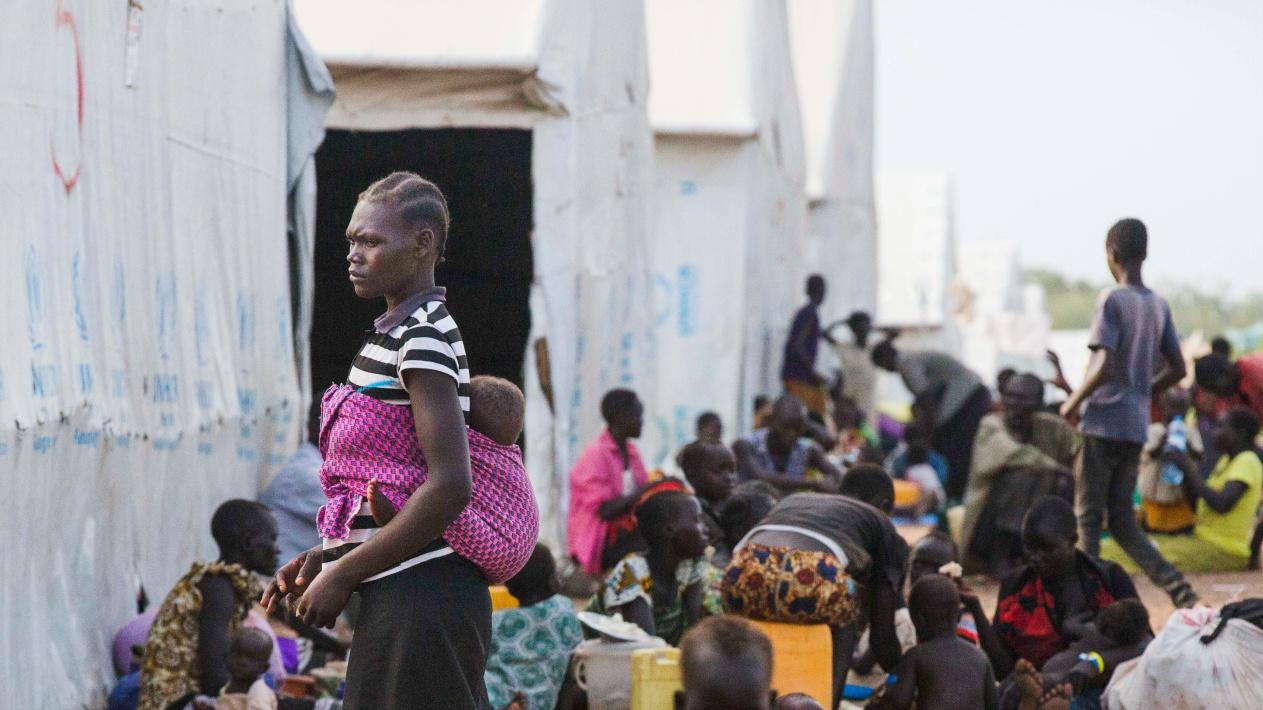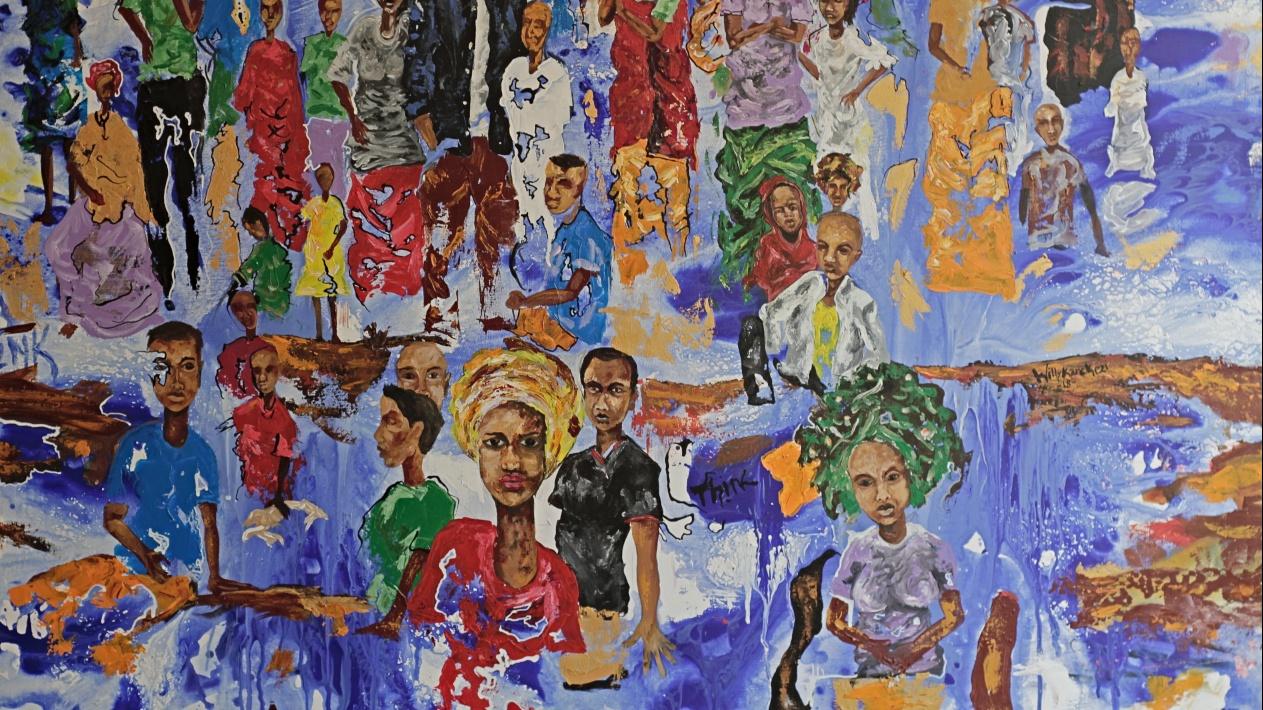Kenya’s refugee camps have long been depicted as hotbeds of “terrorism” leading to recurrent threats of camp closures and refugee expulsion. With the present drought in the Horn of Africa again pushing tens of thousands of people to seek refuge in Kenya, further securitisation of refugee camps in the name of fighting “terrorism” should be resisted, write Hanno Brankamp and Zoltán Glück.
The drought currently affecting Somalia has led to unimaginable devastation in the country. As well as the internal displacement of at least 1 million people since the drought began in January 2021, approximately 50,000 people have sought refuge in Kenya, with 20,000 refugees arriving this year alone. This represents one of the largest influxes of refugees into Kenya in the past decade, and it is estimated that 66,000 more will arrive by the end of April this year. With this influx, Kenya’s largest refugee camp, Dadaab, could experience a steep rise in its already sizable population of 233,000.
Kenya’s official policy states that it will close all its refugee camps. When former Kenyan president Uhuru Kenyatta addressed a special high-level meeting of the Intergovernmental Authority on Development on Somali displacement in the Horn of Africa in March 2017, he succinctly expressed his country’s long-felt ambivalence about hosting refugees. “[Dadaab refugee] camp has, over time, lost its humanitarian character. It is not acceptable to us that a space that is supposed to provide safety and assistance, is transformed to facilitate agents of terror and destruction,” Kenyatta said.
Kenya has indeed suffered a wave of recent terrorist attacks. Since Kenya’s invasion and military occupation of neighbouring Somalia in 2011, the country has been drawn further into the expanding US-sponsored “Global War on Terror” and is East Africa’s top recipient of foreign military aid. Somali Al-Shabaab militants retaliated with a series of grenade and bomb attacks on the Dadaab camps in 2012, followed by globally televised and deadly assaults on Nairobi’s Westgate Shopping Mall in 2013, Garissa University College in 2015, the town of Mpeketoni in 2014, the DusitD2 Hotel in 2019, and the US-Kenyan military facility at Camp Simba in 2020.
The 550,000 refugees living in Kenya have borne the brunt of the political backlash from a conflict they themselves are seeking safe refuge from. Following the Garissa University attack by Al-Shabaab in 2015, then Vice-President (and current President) William Ruto demanded the closure of the Dadaab camps while promising that Kenya was “going to change for good”. The Kenyan government has since repeatedly announced—to global media fanfare—that it would close the Dadaab and Kakuma camps due to lasting concerns over national security and the “economic burden” of refugees. These plans have time and again been temporarily halted by Kenya’s High Court, most recently in 2017 and 2021. Yet in late April 2021, a joint statement between the Government of Kenya and the UN Refugee Agency (UNHCR) set out a roadmap for the tentative closure of both camps by June 2022. With the expiration of this deadline, it remains dramatically unclear what legal status the camps have and what future any current (or future) residents might expect there.
Dadaab and Kakuma were established in 1991 and 1992 respectively and many current residents were born there, having never known another home. South Sudanese refugee, writer and activist Nhial Deng recently vividly detailed his own experience of this “fear of being kicked out of the only home you know at a moment’s notice; the frustration of not having the rights and freedoms that would enable you to fully integrate into society and build a future for yourself.”
Through this tension between asylum on the one hand and security concerns on the other, Kenyan camps have emerged as spaces of particular significance in which the climate emergency, displacement, and the so-called Global War on Terror intersect. The twin disasters of the War on Terror and the climate emergency are among the major drivers of the enduring “refugee crisis” in Kenya. It is estimated that globally 37 million people have been displaced by the post-9/11 wars, including 4.5 million Somalis displaced (3.4 million internally and 800,000 internationally) prior to the current drought. Somalia is simultaneously one of the countries least responsible for climate change and most dramatically impacted by it. The present drought coming after five seasons of failed rains shows how deadly this coupling is, as the war is simultaneously making the delivery of aid much more difficult.
The militarisation of refugee governance has made the humanitarian situation more acute. Refugees are routinely imagined—not only in Kenya—as existential threats to national cohesion, security and territorial integrity. A security threat increasingly met with a securitised response. Treating refugees as “security problems” is bad for society in myriad ways. For refugees themselves it endangers livelihoods, life chances, disrupts the delivery of aid, health care, education, and housing as funds are diverted from social programs into security infrastructures, thus contributing to enduring marginalisation and impoverishment. More broadly, such policies rekindle colonial hierarchies of ethno-racial belonging, fuel rampant xenophobia, and reinforce a worrying trend of treating all social problems as security and policing problems. Instead of addressing the underlying social ills, securitisation simply seeks to repress or contain such problems through carceral technologies.
In Kenya, over the past decade, the administration of refugee camps has slowly been taken out of the hands of humanitarian workers and civilian agencies and given to Kenya’s security agencies (captured most poignantly in the disbanding of the Department of Refugee Affairs in 2016). The institutional structure of refugee management has been reformed around the imperatives of security. Meanwhile, the spaces in which the camps are located—the Northern parts of Kenya—are increasingly treated as zones of exception in which military operations, police checkpoints, curfews, and counterterrorism are used as everyday aspects of governing. In this context, the refugee camps increasingly function as a piece of the security infrastructure of Northern Kenya, concentrated spaces of militarised control to manage the “security threat” posed by refugee populations displaced by the climate emergency and war.
It remains to be seen how the Kenyan government will handle the influx of refugees arriving due to the current desperate state of the drought in Somalia. Registration of Somali refugees has remained suspended since 2016, despite a court order for the government to resume it. Yet there are some faint signs that the hard-line security-first approach to refugee management in Kenya may be softening, such as the passage of the new Refugees Act in 2021, which nominally stipulates pathways for “integration” into Kenyan society (such as the tentative legalisation of employment and ability to start a business for refugees). And yet, the long history of ethno-racialised violence against ethnic Somalis in Northern Kenya, and the recent use of camps as spaces for containing the “security threat” ostensibly posed by refugees is worrying.
The recent influx of refugees into Kenya fleeing drought is a sign of things to come. Before climate breakdown increasingly displaces many people in the region, there must be a concerted effort to dismantle this outdated securitised approach to these overlapping crises to better protect people experiencing displacement. Counterterrorism policies should have no place in refugee affairs.
Photo credit: Willie Ngetich used under CC BY-NC-ND 2.0





